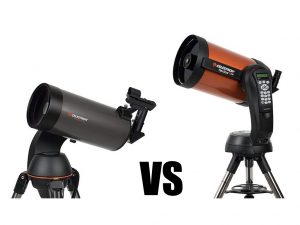This site contains affiliate links to products. I may receive a commission for purchases made through these links.
If you’re an astronomy enthusiast like me, you’ll know how dew can be a real party pooper during our stargazing nights. Well, I’ve got a solution for you – build your own dew heater straps.
These nifty devices combat the dew that forms on your telescope, keeping your vision clear and your equipment safe. Trust me, it’s a game-changer.
Materials Needed
A handy DIY project I enthusiastically recommend is building your own dew heater straps. It’s essential, however, to use the right materials. Staying organized can make all the difference in finsihing such a project.
First off, you’ll need a nylon webbing roll. The width of the webbing should be about 1 inch. It’s durable, weatherproof and can stand the extreme conditions of the outdoors. A roll of about 10 feet should do the trick.
Next up is a resistor. You’ll require this to create and control heat. Go for a high wattage, 10 Ohm wire wound resistor. It ensures the right balance of power and safety.
The third material is electrical wire. This will be used to create a circuit with the resistor. Grab a roll of 22 Gauge stranded wire, its flexibility will help streamline the building process.
A toggle switch comes next. This will function as your power control. Make sure it’s a waterproof one; after all, we’re dealing with dew fallout.
We’re almost there; hang tight. You’re going to need a heat shrink tubing pack. It will provide insulation for your connection points, very crucial in maintaining functionality.
A roll of electrical tape is also necessary, used to bundle wires together and offer additional protection.
Lastly, you’re going to get yourself a power supply. To keep your telescope dew-free continuesly, you need a steady power source. A 12v DC adapter will be just perfect.
As you gather your materials, remember to create a conducive workspace. This is going to boost your success in this venture. Stay tuned for more as we progress in creating our dew heater straps.
Materials
|
Quantity
|
Nylon webbing roll
|
1
Resistor (high wattage, 10 ohm)
|
1
Electrical wire (22 Gauge stranded)
|
1 roll
Toggle switch (waterproof)
|
1
Heat shrink tubing pack
|
1
Electrical tape
|
1 roll
Power supply (12v DC adapter)
|
Understanding Dew Formation
Before we take a deep dive into the intricacies of building dew heater straps, it’s crucial to understand what causes dew formation in the first place.
A dew is a natural phenomenon that happens when the air’s temperature drops and reaches its dew point. The dew point is the temperature at which the air can no longer hold all of its water vapor. So it starts to condense and turns into liquid water, resulting in dew.
Certain conditions prevail when dew forms. The two prime factors are the air temperature and the air’s relative humidity. If the temperature drops, it brings the air closer to its dew point. At the same time, if the humidity increases, the dew point temperature also rises.
It’s worth recognizing that dew can potentially harm our photographic equipment. Moisture accumulation might promote unwanted fungal growth and degrade the equipment’s quality and longevity.
To protect our gear, we need a practical solution. That’s where a dew heater strap comes in. It is an essential tool used to prevent dew from forming on our equipment by maintaining the temperature slightly above the dew point.
By having an understanding of how dew forms will make it easier to grasp the working of a dew heater strap. As we proceed further into the steps of building a dew heater strap, this knowledge will help appreciate its practicality and effectiveness. With this, we’re equipped to stride forward to the succeeding sections gearing towards building your dew heater strap.
How Dew Heater Straps Work
Just as it’s crucial to understand how dew forms, knowing How Dew Heater Straps Work is key to leveraging their usefulness. They’re simple yet effective devices characterized by a unique heating mechanism.
Unlike ordinary heaters, dew heater straps don’t fire up to extreme temperatures. Instead, they maintain a gentle, continuous heat to prevent dew from settling on your equipment. They’re typically constructed from durable, heat-conductive materials such as copper or aluminum, wrapped in an insulative layer. These materials distribute heat evenly across the surface, creating a barrier that fends off moisture.
To power up, these straps usually require a 12-volt DC power supply, similar to that of a car battery. The current generates heat which is then transferred to your lens or telescope through the material of the strap. This constant, low-level warmth is enough to keep dew at bay without causing any damage.
It’s essential to realize that dew heater straps don’t necessarily heat your equipment to a noticeable degree. They produce just enough warmth to keep the equipment’s temperature a tad above the dew point – just out of reach of the menacing dew. Therefore, despite operating for long hours, these straps don’t pose any risk of overheating your gear.
To ensure these straps work optimally, they need to be wrapped snugly around your gear. By making direct contact with the equipment’s surface, they are able to prevent dew formation most effectively.
This working mechanism may seem simple, but it’s the underlying science that makes it effective. And once you’ve grasped how dew forms and how a heater strap counters it, you’ll realize just how indispensable a tool it can be for every astrophotographer’s toolkit. Even better, building one yourself isn’t as complex as you might think. But before we dive into the DIY process, let’s explore a few more essential facts about dew heater straps.
Designing Your Dew Heater Straps
Now that we’ve explored the science behind dew formation and how dew heater straps counter it, let’s roll up our sleeves and dive into the design process. Dew heater straps may seem intricate, but I assure you, they’re more elementary than you’d expect.
To start with, determine the size of your dew heater strap. This will depend on the size of your camera lens or telescope you’re wrapping it around. A snug fit is vital to keep your equipment above the dew point temperature.
Next, you’ll need to gather your materials. Keep in mind, your choice of materials should be heat-conductive and durable. Some common materials used in DIY dew heater straps include:
- Resistance wire, this produces heat when current flows through it
- Nylon straps, they provide durability and flexibility
- Velcro, it ensures the strap stays snug against your equipment
- Heat shrink tubes, they insulate your wire and protect your strap against electric shock
Consider the power source. Most dew heater straps function on a 12-volt DC power supply. Make sure you have an accessible power outlet to run your dew strap whenever you’re gearing up for a night under the stars.
You may be thinking, isn’t this just a simple heating element? And, in essence, you’d be right. But the beauty of building your own dew heater strap lies in tailoring it to your specific needs. It’s not just about preventing dew formation; it’s about ensuring your tailor-made solution fits seamlessly into your astrophotography setup.
Remember that while building your dew heater strap is a hands-on project, safety should always come first. You’re dealing with electricity, heat, and expensive equipment, so it’s crucial to take your time and double-check your work at every step of the way.
Now that we’ve laid out the groundwork for the design aspects, let’s delve into the actual construction of your dew heater strap in the next section.
Step-by-Step Guide to Building Dew Heater Straps
Let’s not waste any time and get straight to the business of how to construct this dew heater strap.
To begin your DIY project, gather all the required materials: resistance wire, nylon strap, Velcro, heat shrink tubes, and a 12-volt DC power supply.
Next, measure the circumference of your equipment to determine the length of the heater strap you’ll need. Remember, a snug fit is essential to maintain effective heat distribution.
With your measurements in hand, cut your nylon strap and Velcro to the needed length. Affix the Velcro on the ends of the nylon strap. Make sure it’s done in a way that when looped, the strap can securely attach to itself.
It’s time to prepare the resistance wire. Cut a length of wire that’s approximately three times the length of your strap. Carefully coil up the wire, and space these coils evenly across the length of your nylon strap. Secure this coiled wire on the nylon using a strong adhesive; you definitely don’t want it slipping off when in use.
Once the resistance wire is secured firmly, slide a heat shrink tube over this wired part of the strap. The tube should be long enough to cover the entire length of coiled wire. With your heat source (like a heat gun), gently heat the tube so it contracts snugly over the wire, ensuring all coils are completely encapsulated.
The final step involves powering up. Connect the ends of the resistance wire to your 12-volt DC power supply. Ensure the connections are well-insulated and safely away from any flammable materials. To regulate the heat, you can use an adjustable voltage regulator connected between your power supply and the heater strap.
In creating your dew heater strap, safety should always be your top priority. If you’re ever unsure, turn to a professional for help. The dew heater strap’s efficiency hinges on proper construction. Take your time, be precise, and you’ll have a DIY dew heater strap that you can rely on.
Testing and Troubleshooting
Once you’ve finished constructing your dew heater strap, it’s essential to test it before relying on its performance in the field.
To kick off the testing process, plug in the power supply and inspect your device closely. Keep checking if it’s heating evenly and sufficiently. A correctly built dew heater strap should warm up soon after plugging it into the power supply. Be sure to turn off the power before touching the wire to avoid any danger.
In case the heater strap doesn’t heat up as expected, don’t worry just yet. Congratulations, you’re now on the second phase of this step – troubleshooting!
Is the resistance wire securely attached? Have you double-checked that your connections to the power supply are securely in place and correctly wired? Is the heat shrink tube completely encapsulating the wire? See? Troubleshooting is nothing more than asking the right questions.
If your dew heater strap is still not heating up, then it’s most likely to be an issue with the resistance wire or the power supply itself. In that case, try replacing one, then the other, while re-inspecting after each change.
Remember, constructing your dew heater strap is like any other DIY task. It might take you a couple of tries before you perfect it. Keep trying different fixes, keep testing. You’ll get there!
Just think about the satisfaction you’ll get when you finally manage to get this thing working on your own. It’s worth it, isn’t it? Besides, working on your projects isn’t just about reaching the finish line. It’s about learning and enjoying the process too.
Conclusion
So there you have it – your very own dew heater strap, built from scratch. It’s been a journey, from gathering your materials to testing the final product. Remember, the key is in the details – getting the right measurements, securing the wire effectively, and ensuring a snug fit. Don’t be disheartened if it doesn’t work perfectly the first time, troubleshooting is part of the process. Keep trying, keep learning, and you’ll master the art of building dew heater straps in no time. Now, you’re not just an observer of the stars, but a crafty innovator, ready for any dewy night. Enjoy the warmth of your success.
Frequently Asked Questions
What materials do I need to construct a dew heater strap?
You will require pieces of a nylon strap, a coiled resistance wire, Velcro, a heat shrink tube, and a power source to create a dew heater strap. Measuring tools like a measuring tape are also paramount to obtaining accurate measurements.
How do I determine the size of the strap?
You should measure the circumference of the equipment on which you wish to attach the dew heater strap. This measurement will guide you in determining the length of nylon strap you need for a snug fit.
How do I fit the Velcro and resistance wire to the strap?
First, attach the Velcro to your nylon strap ensuring it fits perfectly. Then, carefully secure the coiled resistance wire onto the strap. A good fit is crucial for optimal heating.
How do I encapsulate the wire?
You can use a heat shrink tube to encapsulate the coiled resistance wire on your strap. It ensures protection for the wire, and it also improves longevity and reduces chances of damage.
How do I connect the strap to the power supply?
Securely connect the ends of your coiled resistance wire to the power source. The connection provides the necessary electricity to heat up the strap.
What to do if the strap is not heating up as expected?
There are several factors to consider: check if the strap is properly secure, review the wire and power connection, or adjust the heat settings of your power source. If it still fails, try other troubleshooting steps as detailed in the article.
Is it normal to encounter issues when setting up the dew heater strap?
Yes, it’s normal to face some difficulties. The steps can be tricky, especially for beginners. Keep trying different fixes and enjoy the learning process in constructing your dew heater strap.




